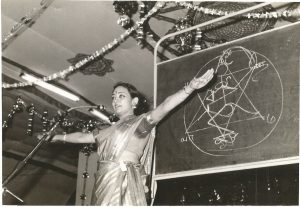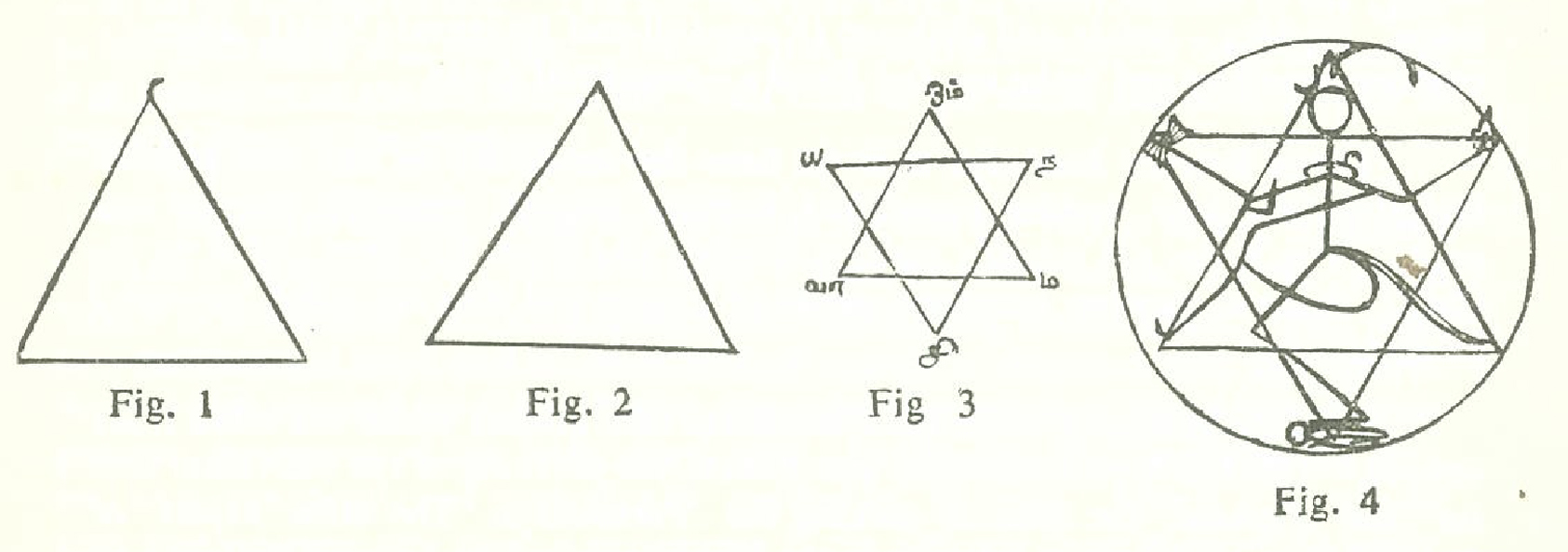The Dance of the Supreme is bliss


The months of February and March have been hectic for Bharatanatyam dancers in Tamil Nadu, as they have been presenting their dance as an offering in the Siva temples before, on and after Sivaratri. In keeping with the fervour, we present two interesting articles on Siva-Nataraja by eminent personalities.
The first is an exposition of the symbolism and joyous dance of Siva-Nataraja who forms an integral part of Bharatanatyam – the dance form so closely intertwined with the Tamil country. It is more than a coincidence that the birthday of the octogenarian writer — Natya Kala Acharya and President, Sree Bharatalaya, Chennai, Prof. Sudharani Raghupathy, falls on 21st March.
Read on….
The following are edited excerpts from an elaborate paper presented by Prof. SUDHARANI RAGHUPATHY, titled ‘Bharatha Natyam – The Dance Art of the Tamils’. It was published in volume one of the journal “Proceedings of the Fifth International Conference – Seminar on Tamil Studies, held in Madurai, Tamil Nadu in January 1981, brought out by International Association of Tamil Research, Chennai. The following article has selected excerpts focussing on Siva-Nataraja.
ஆனந்தம் ஆடரங்கம் ஆனந்தம் பாடல்கள்
ஆனந்தம்பல்லியம் ஆனந்தம்வாச்சியம் ஆனந்தம்ஆகிஅகிலசராசரம் ஆனந்தம் ஆனந்தக்கூத்துகந்தாணுக்கே
Everything is Bliss! The stage, the songs, the orchestra, the various instruments (percussion), the entire universe. It is all one Supreme Bliss for the great Lord who revels in dancing. — Thus spake Thirumular in his Thirumandiram.
The very creation is said to be the Dance of the Supreme, it is Ananda, it is Bliss, it is the five-fold activity of creation, preservation, destruction, obscuration and revelation of the Cosmic Dancer, Lord Nataraja, who is the embodiment and manifestation of eternal energy as the Nrityamurti. If this is so, how ancient then is the art of dancing, the Kuthu, the Natakam, or the Natyam as referred to in Tamil literature?
Dance is the ‘Objective Presentation’ of the ‘Subjective Reality’; it is the outward expression of an inner emotion or a compulsion; the giving of a concrete form to the human ideas and ideals through movement. It seems to be the earliest manifestation of man’s creative impulse. It was one of his most vital expressions of worship and its connection with magic, invocation and appeasement has been projected through movement for thousands of years. It has been part of his ritual in propitiating the gods and also as part of his social activities. Also, dance has always been a spontaneous expression of joy as a result of exuberance. All primitive societies have indulged in dancing and the instinct of dancing seems to have preceded the faculty of speech or song. Why, even animals and birds go through elaborate dance rituals. The dance of the honey bees to communicate information like source and distance of nectar so beautifully described by the Nobel laureate Von Frisch, is too well known to be repeated here.
Dance in the West has come to be regarded as a means of self-expression, whereas in the East and India in particular, dance carries the dual message:
1. The physical to be lifted to the plane of the sublime.
2. The interpretation of the universal by the submergence of the individual self.
Dance in India goes back to times immemorial, over 2000 years and even then it had reached a high degree of perfection, subtlety and beauty. The dancing figure of a girl in the Mohenjodaro excavations and also a dancing figure considered to be Lord Siva, illustrate that dance was very much part of the Pre-Aryan civilization in India. The various phases of Indian Art could be referred to as temple art, because it was essentially part of the mode of worship in temples and spiritual identification with God considered the Supreme Artist. Every action of man, including his daily ritual and his works of art, was guided by the hand of God and the most eloquent representations of Indian culture are the temples of India, that have survived for thousands of years. Religion is so much part and parcel of Indian culture that it is difficult to separate art and culture from religion, be it painting, dance, poetry or sculpture. Further, the origin of the arts in India is so shrouded in the mists of antiquity that it is very difficult to fix the correct date for many artistic events. So when we speak of dance, the evidences we have are the dance sculptures, frescoes and paintings in the various temples and the available manuscripts and treatises on art. Dance is movement and therefore difficult to record. …
Dance is so much dependent on human emotions, actions and habits, that it is said to be the most malleable and changeable of arts. Art is the vehicle to communicate what lies beyond speech and the dance art is said to be the most ancient art or the mother of the other art forms. It is a visual art, it is an arrangement or a pattern in space and time. It touches one’s mind and involves different aspects of life. Dancing is not just steps but the use of gestures to convey ideas and emotions.
As in all walks of life, society incorporates into itself what is necessary and what it requires and rejects what is not wanted. Different styles of dance are no exception to this rule. Hence, some dance forms go into oblivion while others attain more and more popularity.
Bharatanatyam is one such form of dance that has stood the test of time and has evolved into one of the most highly developed and balanced forms of dance in the world. This style of dance is exclusive to the Tamil country. Originally, it was referred to as Kuthu, then it came to be called Sadir or Chinna Melam. Today, the colloquial use of the term Bharatanatyam has replaced the term “Sadir”. …
Adiyarkkunallar, the 12th century commentator of Silappadikaram, in the course of his commentary observes– ‘Ancient Tamil works on dance like Bharatam and Agathiam have now been lost and also works like Muruval, Sayantham, Guna Nool and Seyitriyam are available only in fragments’.
The above two references show that the expression ‘Bharatanatya’ is not of recent coinage. Whatever it is, society has accepted Bharatanatyam to be the dance of the Tamils and the very word Bharatanatyam brings to mind a particular style of dance found in Tamil Nadu.
Today from being a community art performed by a particular sect it has become the universal emblem of culture in every home. Bharatanatyam has always been a flourishing art in Tamil Nadu. … Thus, what we can recognise, identify and interpret as Bharatanatyam appears to have been an unchanged theme in music, sculpture, painting, art and mythology in Tamil country. Even in the spiritual domain, there is reference to dance, e.g. the Thirumandiram of Thirumular, who speaks of Lord Nataraja as:
அண்டங்கள்ஒரேழும் அம்பொற்பதியாகப்பண்டை ஆகாசங்கள்ஐந்தும் பதியாசிதெண்டினில்சத்தி திருஅம்பலமாகக்கொண்டு பரஞ்சோதி கூத்துகந்தானே
“With the skies and the seven worlds as the stage, with Shakti as the motivating force, He performed the Supreme Dancer; He, the Lord Nataraja”.
Here are some of the names of the celestial dancer Lord Siva, ஆடல் அரசன், கூத்தப்பிரான், ஆடல் அழகன் , something unique and peculiar to Tamil Nadu.
தென்னாடுடைய சிவனே போற்றி எந்நாட்டவருக்கும் இறைவ போற்றி
“Hail to thee, O Siva, Lord of the Southern Country Hail to thee. O Supreme Lord of all nations”.
The conception of the figure of Nataraja encompasses the entire philosophy of life and of creation that man’s intelligence is capable of conceiving. The figure of Nataraja represents perhaps the finest expression of perfection of sculpture not only of India but of the world.
Breathes there a man who is not captivated by a statue of Nataraja with a benign smile, lissome, almost smooth fluid movement, not weak but powerful and showing strength of form, balanced and well poised! No other art anywhere in this world has reached this height of development. Nataraja represents the rhythmic and vibrant nature of life, which is cyclic (Figure 4).
Bharatanatyam is that complex whole that comprises coordinated movements and exacting rhythms with the nritta sequences mathematically accurate, geometrical in symmetry and form, deliberately infused grace with tremendous suspension and power in the presentation of gesture and movement, sculpturesque poses, decorative and meaningful hand gestures, beauty and colour in costume, all these within itself in a well balanced manner, such that it is a visual feast — not just visual but touching the heart of man. All these aspects combined and moulded with the rich tradition, philosophy, religion and culture of over 2000 years, has gone to evolve Bharatanatyam into one of the most beautiful dance styles of the world. It is also a powerful medium of communication. This has been also used for reinforcement of the ideas in our philosophy and religion. Through this powerful medium of communication our ancestors in the ancient Tamil Nadu tried to get across our basic as well as complex ideas of the universe. ….
Love or sringara is the most dominant rasa around which the other rasas revolve. This has been sublimated into bhakti, the yearning of the individual soul for the supreme, the jivatma seeking the Paramatma. The other aspects of Bharatanatyam to be appreciated are the elasticity, plasticity and the flexibility of the art making it the vibrant and dynamic art that it is. Elasticity in the sense is that the theme can be expanded or contracted. Plasticity means capacity to mould an idea with the aid of the changing gestures. Flexibility means that the theme and the gesture can be used in a variety of ways to project the emotion, the idea and the story….
Change is part of civilization. There is change from moment to moment. Bharatanatyam has reached this stage of development keeping within the frame- work of tradition, like Carnatic music with its ragas which though set in a frame- work, allows for endless possibilities, variations and innovations depending on the musician handling it. In spite of its apparent rigidity, the art of Bharatanatyam is almost like a fresh canvas in the hands of each artist enabling him or her to express the theme in an imaginative way and making it distinctive. Just as in painting, the three basic colours combine to form innumerable hues, so also in Bharatanatyam the basic movements are strung together and woven in an enchanted loom into forming alluring beauty. The whole movement is kaleidoscopic, ever changing, forming myriad patterns of beauty and form. It hardly matters whether it is authored by a single person or a group, nor does it matter whether it is a compendium or a single treatise; what matters is, that it has stood the ravages of time in this ever changing universe and has maintained its pristine purity to a large extent and this is a pride of our Tamil Culture.

It is interesting to speculate on the figure of Nataraja, as it represents the very quintessence of Tamil Philosophy. Two triangles (Fig. 1 and 2) placed one over the other (the second invented) form a six-sided star “Shatkonam” (Fig. 3). The figure of Nataraja fits in beautifully into this (Fig. 4). The Lord suppressing evil symbolically represented by Muyalakan, the damaru (drum), on the right hand to represent the rhythmic nature of life, fire on the left hand to symbolize life’s energy, the crescent moon the height of knowledge, Ganges on the head — the water of life, snake symbolising air — thus the panchabhutas are represented. The raised right hand indicates Abhayam while the left hand indicates, “Here I am”.
The raised left foot — path to salvation, the flying veil — removal of illusion and so on. The Tiruvasi around Nataraja represents the vibrant, rhythmic and cyclic nature of life. This symbolic figure of Nataraja represents perhaps the highest philosophy of Tamils, that all life is essentially made of five elements, there is a constant effort to suppress evil, life is rhythmic, vibrant and cyclic. Life is bliss.
<<>>
